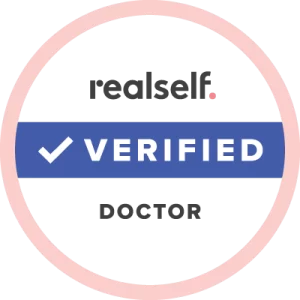Upper Eyelid Blepharoplasty Surgery
Tunbridge Wells, Kent, London
Upper Eyelid Blepharoplasty Surgery Procedure
Surgery to lift the upper eyelids (upper blepharoplasty) is one of the most popular local anaesthetic plastic surgery procedures. It has a quick recovery and the results are very natural, giving a refreshed and brighter appearance to the face. Upper blepharoplasty can be performed as a procedure on its own, but is frequently combined with other procedures, such as surgery to the brow, facelifts, or other plastic surgery operations.

“Marc made my whole experience from start to finish really straight forward, he explained every step of the procedure and made me feel totally relaxed. The results speak for themselves, very very pleased.”
Before and After Photos


What does it involve?
After careful planning, measurements and drawing on your upper eyelids, local anaesthetic is slowly injected to freeze the area. Incisions are then made in line with the natural skin creases of your upper eyelid. The excess skin is then excised, with or without a strip of the underlying muscle. If you have prominent fatty bulges in the inner corners of your upper lids, some of this fat may be removed at the same time.
What are the benefits?
The benefits of surgery to lift the upper eyelids lie in its quick recovery, relatively little downtime, natural results and safety record. The surgery gives a freshness to your appearance that other people may find hard to place. It is not uncommon for friends and acquaintances to comment on how well you look afterwards, without being able to work out what has changed! You will look less tired and have brighter eyes after the procedure.
How long is the surgery?
Upper blepharoplasty surgery will take around 45-minutes to perform.
What is the recovery period?
It is normal to have a degree of swelling and bruising afterward the procedure. This will fade after 1-2 weeks and the scars heal quickly. Your stitches will be removed 5-7 days after your operation. It is not uncommon for your eyes to feel dry and gritty to start with, but this usually settles down after a short time. Lubricating ointment will be prescribed to stop your eyes from drying out.
How long before getting back to normal?
It is important to rest initially, and sleeping with 2 or 3 pillows to elevate your head will help the swelling disappear. Most people are ready to go out and return to work after about 10 days. Heavy lifting and exercise should be delayed until 4-weeks after surgery.
If you are a contact lens wearer, you shouldn’t use them for at least 2 weeks after your operation, as these will dry your eyes out. In addition, reading, watching television and using your computer may also dry out your eyes, so should be kept to a minimum. Make-up on the upper eyelids or eyelashes should not be used until at least 2-weeks after the surgery.
What are the success rates?
Upper blepharoplasty is an excellent plastic surgery procedure that will result in a natural, fresher look. It is also a relatively simple operation from a technical perspective, which improves its safety profile. You will look your best at 6-12 months after the surgery.

What are the risks?
Like any surgery, upper blepharoplasty is associated with risks. The most important complication to be aware of is bleeding post-operatively. Small amounts of bleeding may be stopped with pressure on the eyelid. Rarely you may need to return to the operating theatre. The most serious, but fortunately extremely rare, complication relates to bleeding that occurs behind the eyeball. This is a surgical emergency, which requires certain medicines and an urgent return to the operating theatre – if not attended to as an emergency, it may rarely lead to blindness (the risk of this complication has fortunately been estimated to be as rare as 1 in 40,000).
Scars can occasionally take a while to settle down, and may benefit from regular massaging post-operatively. Infection occurs infrequently, as do small whiteheads around the scar, which can be usually be removed in the outpatient clinic.
Other complications that are reported include too much skin being removed, resulting in difficulty in closing the eye after the surgery – this is rare, as Mr Pacifico is always careful not to overdo your skin excision. In addition, Mr Pacifico does not use the older techniques that involve the removal of large amounts of fat from around the eye as this only serves to make the eyes look older more rapidly.
Want to learn more about Upper Blepharoplasty in Tunbridge Wells, Kent?
To learn more about upper eyelids (upper blepharoplasty), please contact us.
Make an EnquiryVideos
Eyelid lift FAQs
Types Of Lower Eyelid Lifts
Expectations in Plastic Surgery FAQs
